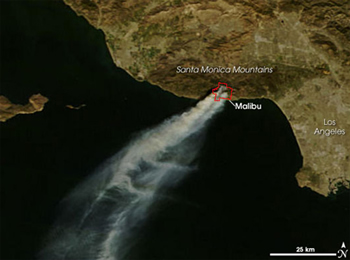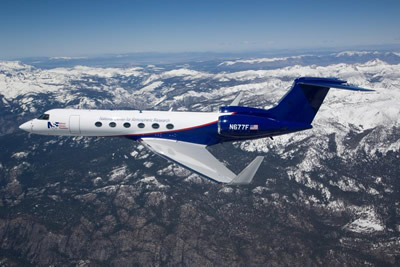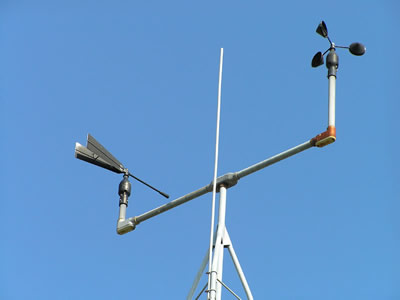Click on image for full size
Courtesy of MODIS Rapid Response
Type of Wind: Chinook or Foehn
There are several different types of wind. One type is the foehn wind. This type of wind is a characteristic of mountainous areas such as the Rocky Mountains and the Alps. The wind off of the Rocky Mountains in North America is a foehn wind that is called a Chinook wind. The wind is a warm, dry wind that blows down the eastern slope of most mountains.
A warm wind like this can bring relief from cold winter weather. Foehn winds are formed from warmer and drier air that flows from aloft or above. This wind has the same force of some hurricane winds. Foehn winds can melt and evaporate a foot (0.3 meters) of snow in less than a day! A rapid change in temperature can occur as a result of foehn winds. Temperatures in Granville, ND increased by 83º F (28ºC), from -33ºF (-36ºC) in the morning to 50ºF (10ºC) in the afternoon of February 21, 1918 because of a Chinook wind coming from the Rocky Mountains!
In addition to causing warmer temperatures, foehn winds have other impacts in the areas where they occur. They can cause snow to melt, which may lead to avalanches and flash flooding. Foehn winds can also create fire hazards. The Santa Ana winds in Southern California are an example of foehn winds that have caused large forest fires because the wind causes the fires to burn out of control. Another bad affect of this warm wind depends on the time of year that it occurs. Finally, if the warm foehn winds occur after spring planting, the seeds might not survive because the wind has parched the soil.
Since this wind is found in mountainous areas, foehn winds can be found all over the world. In Poland, a foehn wind is called halnywiatr. In Romania, this wind is named austru and in Switzerland it is called favogn. Finally, in the Andes the foehn wind, called a puelche, comes off the western side of the mountains.















